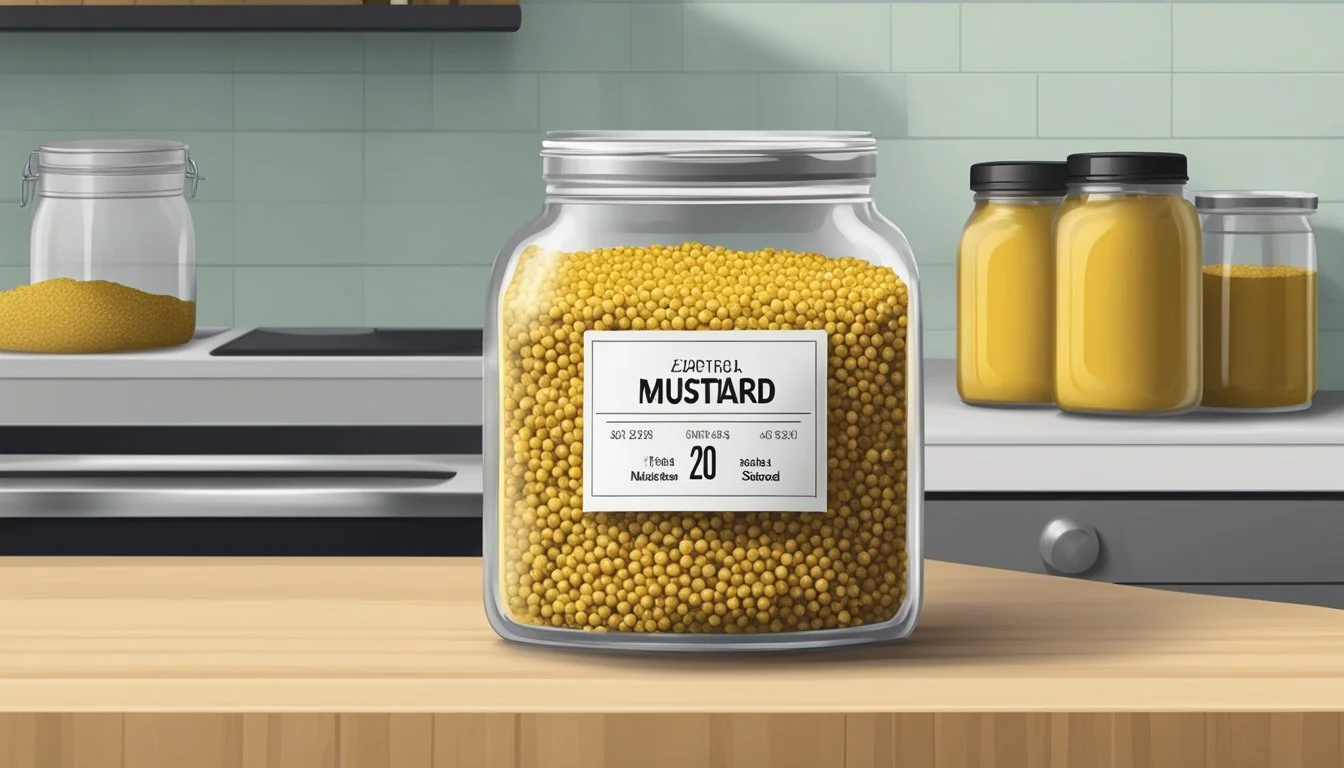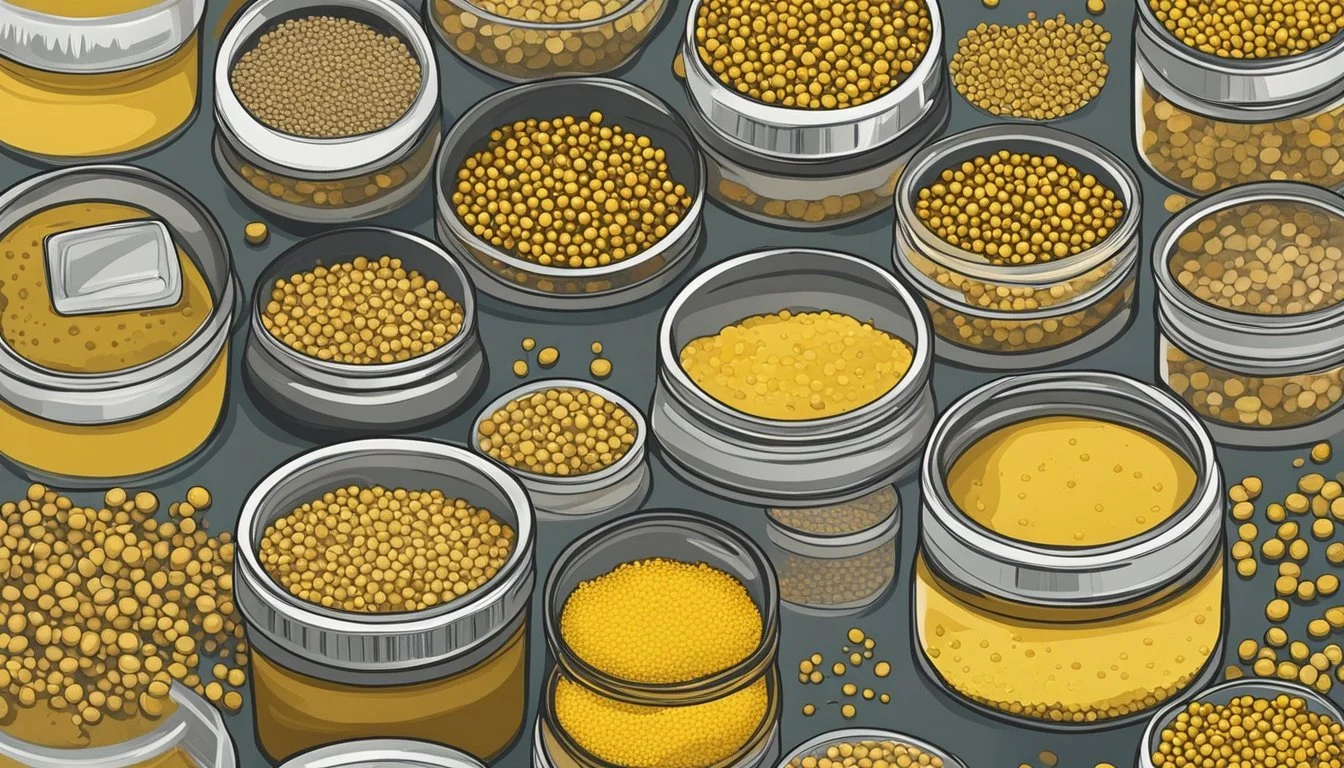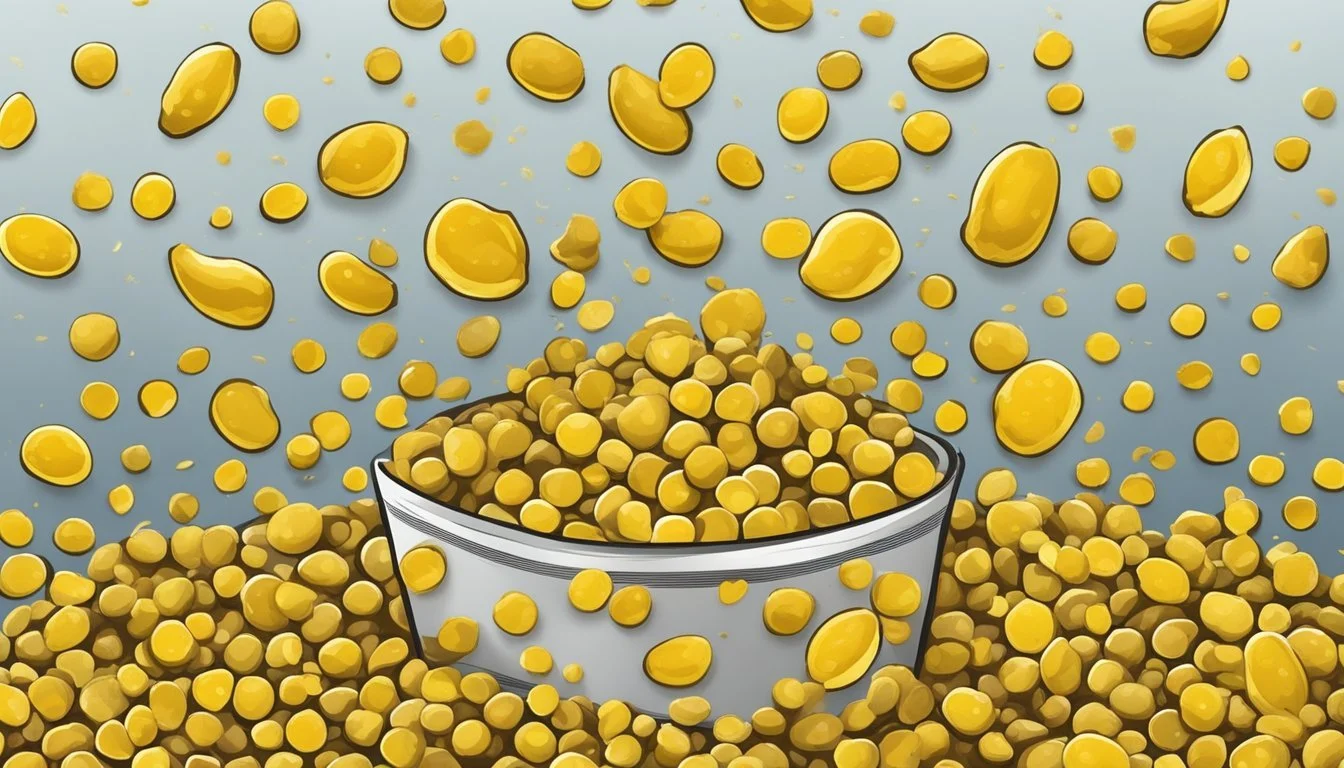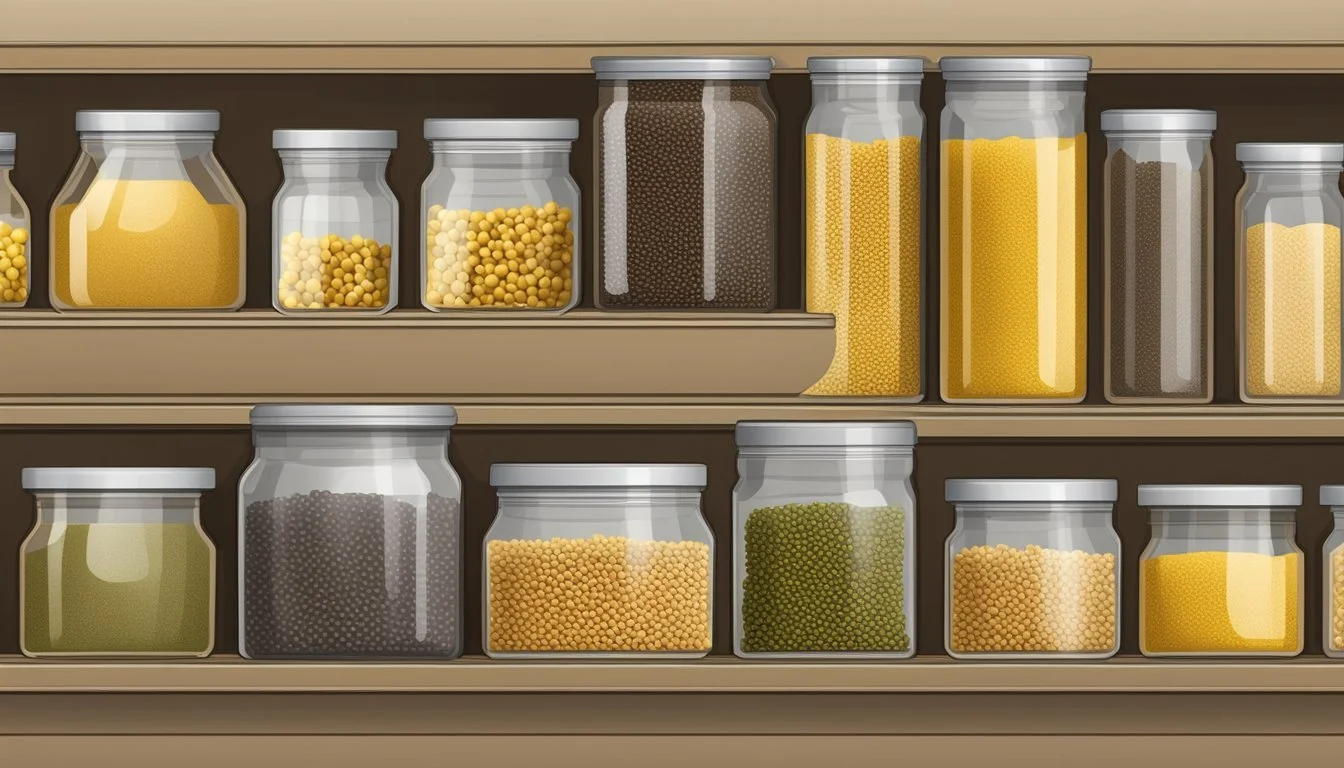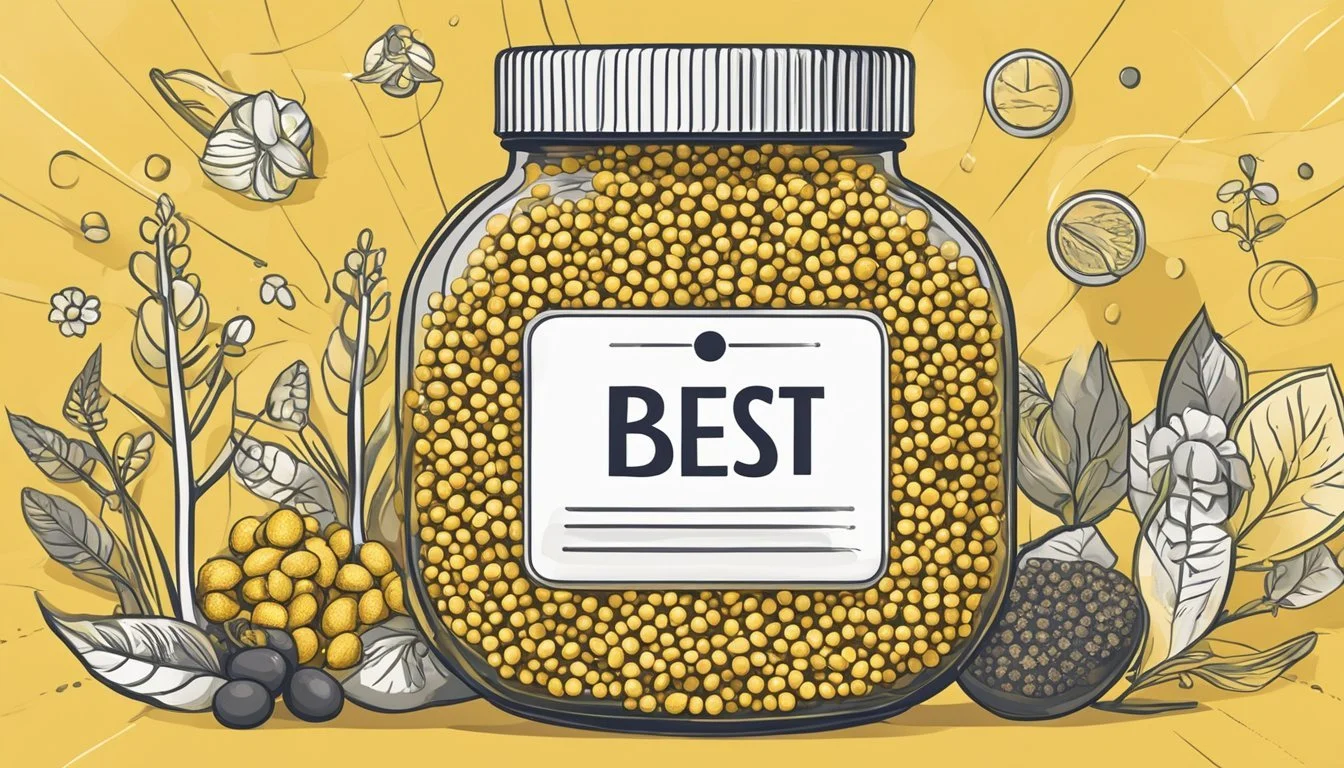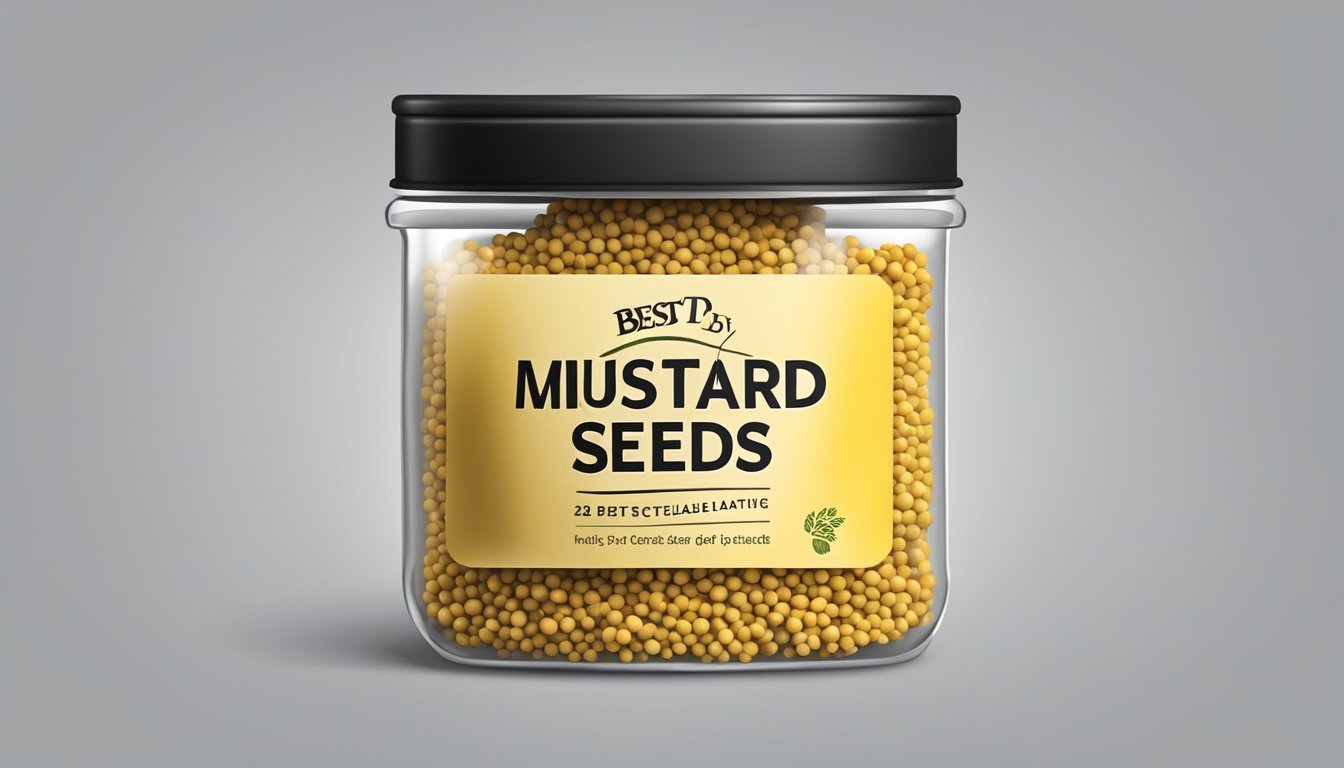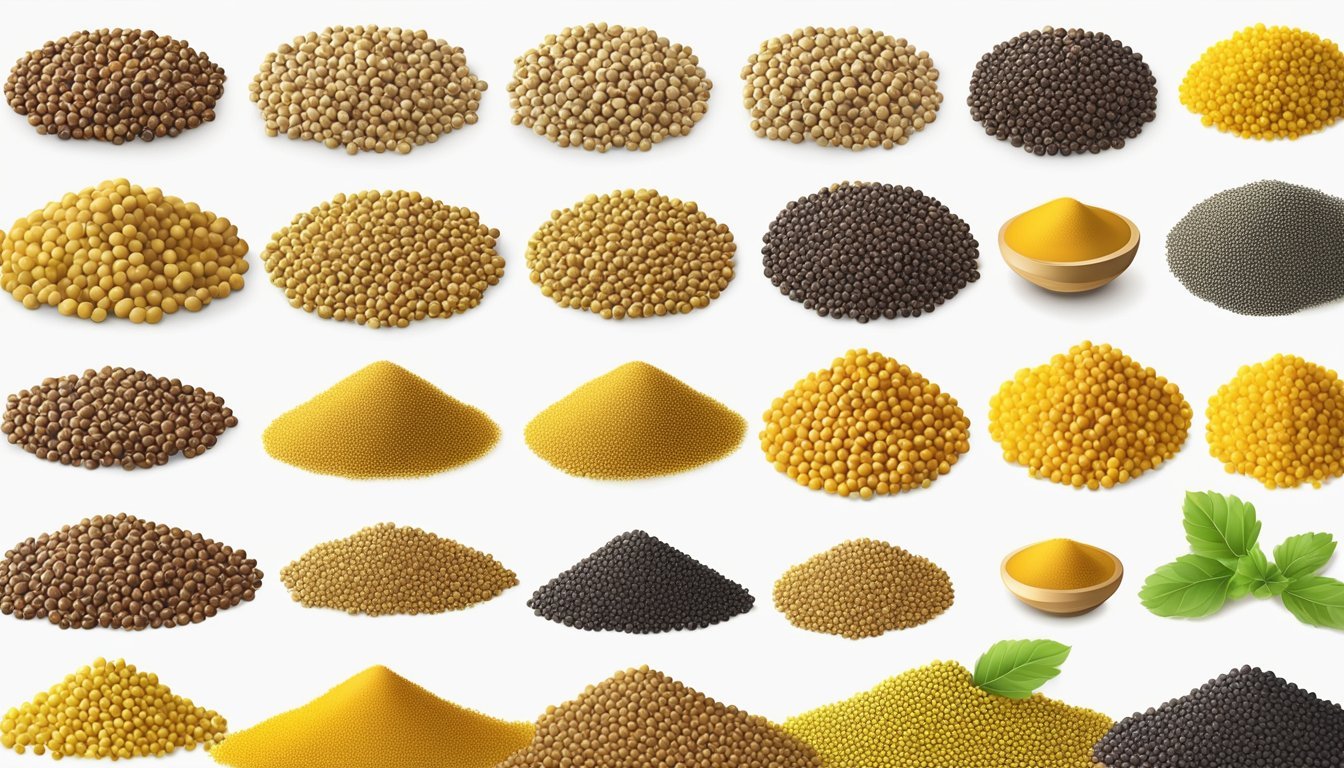Does Mustard Seeds Go Bad?
Shelf Life and Storage Tips
What's the shelf life of mustard seeds, and do they eventually go bad? While mustard seeds are known for their longevity, they are not impervious to spoilage. Mustard seeds, both whole and ground, can last between two to four years when stored properly. Proper storage involves keeping them in an airtight container in a cool, dark place to maintain their quality and flavor.
Over time, mustard seeds may start to lose their potent aroma and characteristic spicy flavor. This change does not happen overnight but gradually, especially if exposed to heat, light, or moisture. Therefore, regular checks on the seeds' aroma and appearance can help in determining their freshness.
Signs of spoilage in mustard seeds include a dull, lackluster scent and visible mold growth or discoloration. Maintaining the potency and flavor of mustard seeds ensures they continue to add the desired punch to your culinary creations. For anyone who frequently uses mustard seeds, it’s essential to know when they might no longer serve their purpose effectively.
Understanding Mustard and Its Varieties
Mustard is a versatile condiment with several varieties, each offering distinct flavors and uses. These types depend largely on the ingredients and preparation methods.
Types of Mustard
Yellow Mustard is the most common, known for its bright color and mild flavor. It typically contains yellow mustard seeds, vinegar, water, and spices.
Dijon Mustard originates from France and uses finely ground mustard seeds. Its distinct taste comes from the addition of wine instead of vinegar, giving it a smoother texture.
Honey Mustard blends mustard with honey, creating a sweet and tangy flavor. It's often used as a dressing or dipping sauce.
Other varieties include Whole Grain Mustard, which uses visible mustard seeds, and Spicy Brown Mustard, known for its coarse texture and robust flavor.
Key Ingredients in Mustard
The primary ingredients in mustard include mustard seeds, water, vinegar, and salt.
Each type of mustard can have specific key ingredients that define its flavor. For instance, Dijon Mustard uses wine, creating its unique taste. Yellow Mustard is simple, often just mustard seeds, vinegar, water, and turmeric for color.
In Honey Mustard, honey adds sweetness. Some mustards include additional spices for enhanced flavor profiles, such as garlic, paprika, or horseradish. The balance between these ingredients dictates the mustard's pungency and texture.
Shelf Life and Degradation
Mustard seeds, depending on storage conditions and their form, can last for a varied period. Factors such as airtight storage and light exposure influence their longevity, while the expiration and best by dates offer guidelines on usage.
Factors Affecting Longevity
The longevity of mustard seeds depends heavily on storage conditions and seed form. Whole mustard seeds last between 2 to 4 years when stored properly in airtight containers. Light exposure and temperature also affect their quality. Keeping them in cool, dark places can extend their shelf life substantially.
Ground mustard seeds, with a larger exposed surface area, show faster degradation. Their shelf life shortens to around 6 months to a year. High-quality seeds at purchase ensures better longevity. Pest infestations can also prematurely end their usability, so regular checks are advisable.
Expiration Dates and Best by Dates
Expiration dates on mustard seed packaging serve as a guideline for safety. After these dates, the seeds are usually safe to use but may lack optimal quality. Best by dates indicate a period during which the seeds retain their peak flavor and potency.
Mustard seeds stored past their expiration may experience degradation in flavor and potency but often remain suitable for culinary use. Bulk-purchased seeds stay fresh longer if transferred to smaller, airtight containers immediately. Proper labeling and rotation of stock can help manage their usage effectively.
How to Identify Spoiled Mustard
To ensure mustard is safe to consume, it is essential to recognize the signs of spoilage. This includes checking for visible changes and alterations in texture and consistency that indicate the mustard is no longer good.
Visible Signs of Spoilage
Spoiled mustard may exhibit visible indicators such as mold growth. Mold appears as dark spots or fuzzy patches, signaling the mustard should not be consumed.
Discoloration is another sign; fresh mustard typically has a vibrant color, either yellow or brown. A dull color or strange hues suggests it has gone bad. Look closely at the mustard in its jar, paying attention to spots or unusual changes in color.
Check for these signs:
Mold-like growth
Discoloration or unusual spots
Changes in Texture and Consistency
The texture of mustard can indicate spoilage as well. Fresh mustard should have a smooth, creamy consistency. If the mustard has clumps or a separated liquid layer, it indicates deterioration.
Additionally, if the mustard appears more watery or has a thicker-than-usual texture, it's a signal it may no longer be good. A spoiled mustard jar will often have a sharp or rancid smell, different from its typical aroma, indicating it is best to discard it.
Key changes include:
Clumps or separation
Watery texture
Strange smell
Proper Storage Techniques
Maintaining the quality and shelf life of mustard seeds relies heavily on how they are stored, whether unopened or after opening.
Storing Unopened Mustard
Unopened mustard seeds should be kept in a cool, dry place. A pantry or a kitchen cabinet away from direct sunlight is ideal. It's crucial to maintain a consistent temperature and avoid areas that might experience heat fluctuations.
Using airtight containers ensures that no moisture can penetrate and affect the seeds. Opaque containers are preferred to shield the seeds from light, which can degrade their quality over time. Keeping them away from strong odors is also beneficial, as mustard seeds can absorb surrounding smells, altering their natural aroma.
Storing Opened Mustard
Once opened, mustard seeds need additional care. Transfer the seeds from their original packaging to an airtight container immediately. Refrigeration can extend the shelf life further, especially in humid climates.
Place the container in the refrigerator, making sure it’s sealed tightly to prevent any moisture from entering. Keep the seeds stored away from strong, aromatic foods. When stored properly, both whole and ground mustard seeds retain their potency and flavor for up to 3-4 years. Checking for any signs of spoilage periodically ensures their quality remains high.
Mustard Seeds: Preservation and Uses
Mustard seeds are versatile ingredients that require proper storage to maintain their quality and flavor. They can be used in various culinary applications, enhancing dishes with their unique taste.
Storing Mustard Seeds
For optimal freshness, mustard seeds should be clean and completely dry. Moisture can lead to mold growth, while light exposure can degrade their color and aroma.
Store mustard seeds in an airtight container. A dark-colored or opaque container is ideal to shield them from light. Place the container in a cool, dark place—such as a pantry—or the refrigerator. Ensure the container is away from strong-smelling foods to avoid odor absorption.
Regularly check the seeds for signs of spoilage, like changes in texture and aroma. Both whole mustard seeds and ground mustard seeds should be stored this way to extend their shelf life.
Using Mustard Seeds in Cooking
Mustard seeds are used to make condiments such as mustard sauce. Grind the seeds into a powder and mix with vinegar, water, and salt to create a smooth paste. Allow the mixture to sit for a few days for the flavors to develop.
Whole mustard seeds, particularly black and brown mustard seeds, are often used in pickling, marinades, and spice blends. They add a sharp, tangy flavor to dishes. In Indian cuisine, mustard seeds are commonly used for tempering, releasing their aroma and flavor when fried in oil.
Chinese mustard seeds can also serve as a base for sauces. When used correctly, mustard seeds can elevate the taste of various dishes, offering a robust and distinct flavor profile.
Safety and Health Considerations
Mustard seeds generally have a long shelf life, but improper storage can still affect their quality and safety. Understanding the risks associated with consuming spoiled mustard seeds and the natural preservative properties they possess is essential.
Risks of Consuming Spoiled Condiments
Consuming spoiled mustard seeds poses minimal health risks as they rarely become unsafe. They generally lose flavor, aroma, and potency before they spoil. Spoiled seeds may exhibit a dull scent and diminished taste, which can spoil the intended flavor of dishes.
Exposure to excessive heat or prolonged storage can cause mustard seeds to go rancid. Rancid seeds have a bitter, off taste, and while not harmful, they are unpalatable. It's crucial to store mustard seeds in cool, dry conditions to maintain their quality.
Natural Preservative Properties
Mustard seeds contain natural preservatives that extend their shelf life. These seeds are rich in selenium and omega-3 fatty acids, which contribute to their durability. Additionally, mustard seeds' antimicrobial properties help inhibit the growth of certain bacteria.
The high oil content in mustard seeds also acts as a natural preservative, keeping them from spoiling quickly. When stored correctly, mustard seeds can last for several years without losing significant quality. Utilizing airtight containers and storing them in a cool, dry place maximizes their shelf life and preservative benefits.
Enhancing Mustard Shelf Life
Extending the shelf life of mustard seeds involves maintaining optimal storage conditions and preventing contamination.
Optimal Conditions for Longevity
Mustard seeds, both whole and ground, last longer when stored in airtight containers. These containers should have tight-fitting lids to prevent air and moisture from entering. Ideal storage temperatures range between 50°F (10°C) and 70°F (21°C).
Opaque containers are recommended to shield mustard seeds from light, which can degrade their quality. Keeping mustard seeds in a cool, dark place extends their usability to up to four years.
Avoiding Contamination
To avoid contamination, always use clean utensils when handling mustard seeds. Any residue or moisture from used utensils can introduce bacteria, leading to spoilage.
Cross-contamination should be avoided by ensuring that mustard seeds do not come into contact with other food items or unclean surfaces. Labels and storage dates should be clearly marked to keep track of freshness.
Properly managing storage and handling routines will significantly enhance the longevity of mustard seeds.
Impact of Preparation on Mustard Quality
The way mustard is prepared significantly affects its quality, flavor, and shelf life. Factors such as whether the mustard is commercially produced or homemade and the role of acidity from ingredients like vinegar play crucial roles.
Commercial vs. Homemade Mustard
Commercial mustard often contains preservatives that extend its shelf life. These may include acetic acid or other additives that help maintain quality in both unopened and opened bottles. The flavor remains consistent, and spoilage is less common due to these preservatives.
Homemade mustard, on the other hand, lacks these added preservatives. It often relies solely on natural ingredients, which means it may have a shorter shelf life. An opened bottle of homemade mustard needs to be refrigerated and consumed more quickly. Despite the shorter shelf life, many prefer homemade mustard for its fresh and robust flavor.
Role of Acidity in Preservation
Acidity is a critical factor in preserving mustard. Vinegar, a common ingredient, contains acetic acid which helps maintain the mustard's quality and prolongs its shelf life. The acidity prevents the growth of harmful bacteria, keeping the mustard fresh for a longer period.
Without sufficient acidity, mustard is more prone to spoilage. This can be a significant concern for homemade mustard, where the balance of acidity from ingredients must be carefully managed to ensure safety and quality. An adequate level of vinegar, or another acidic ingredient, is essential to maintain both flavor and shelf life.

